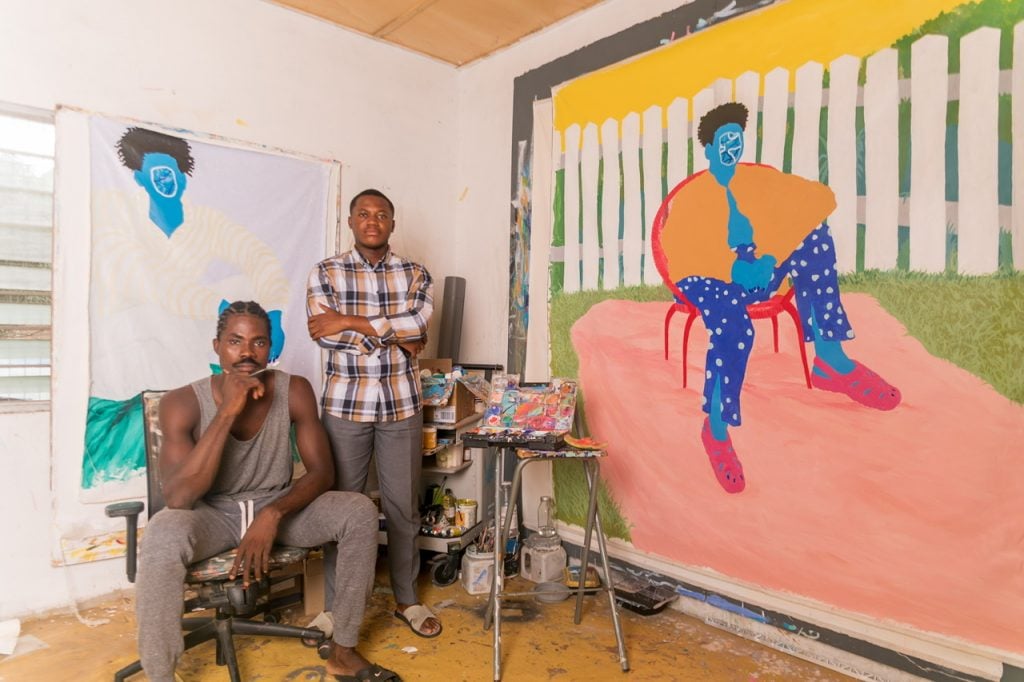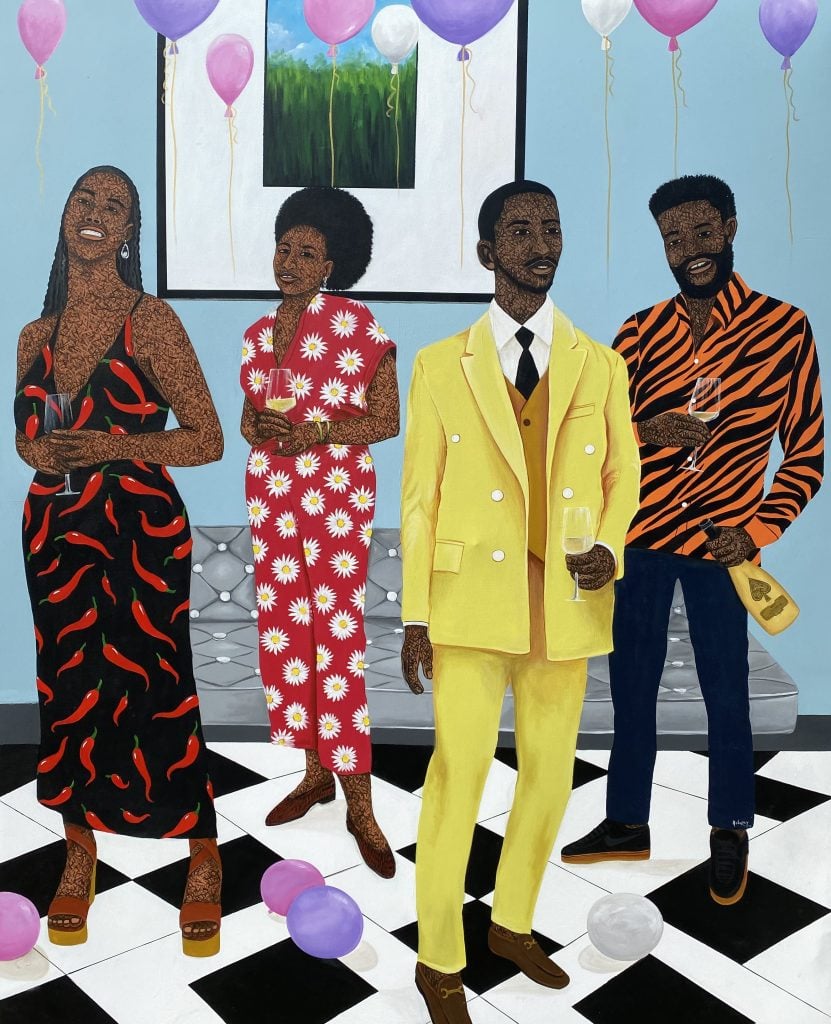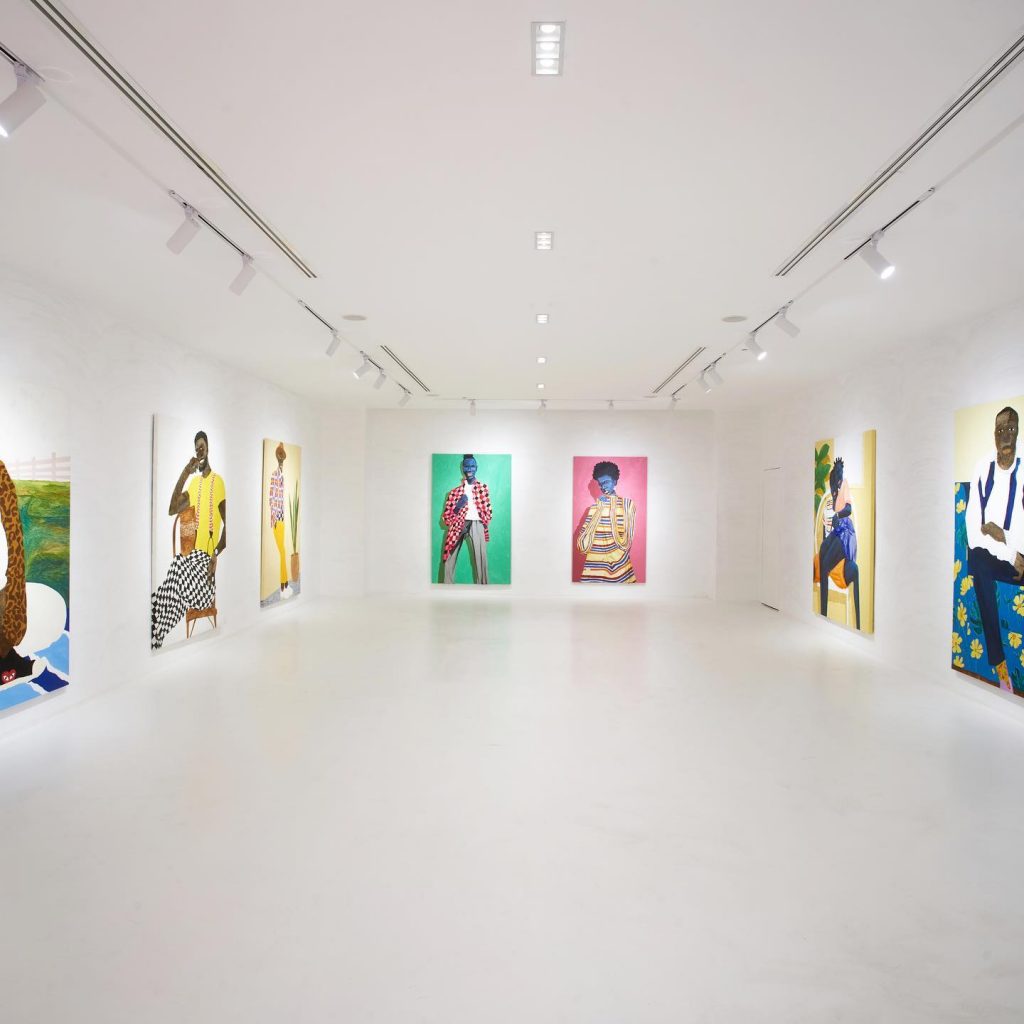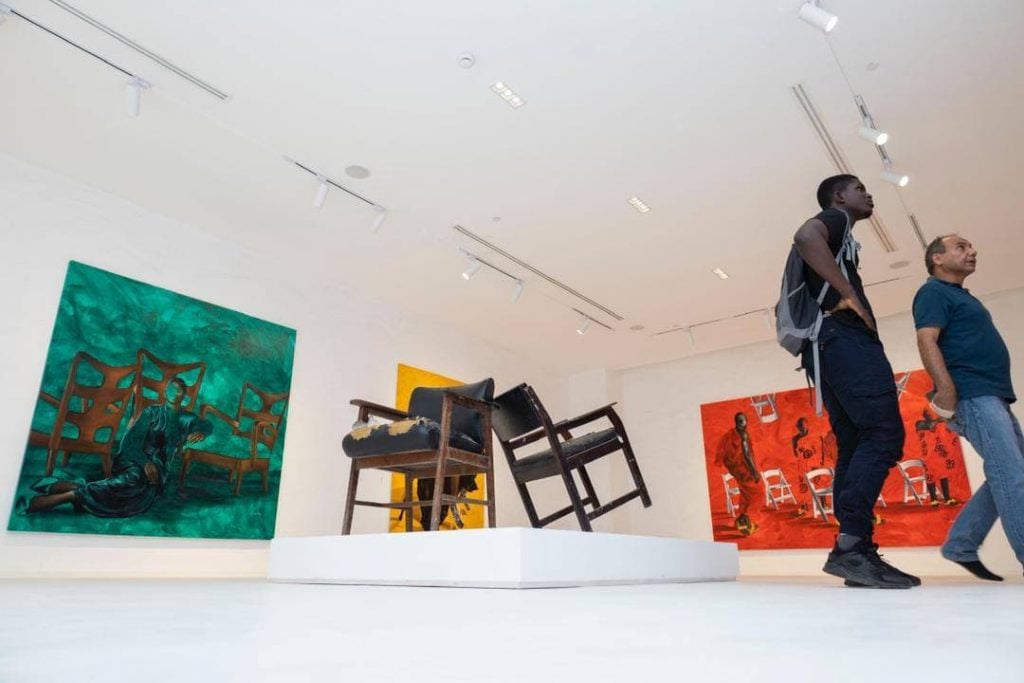Artnet News Pro
Inside the Accra Art Boom: How a Rising Generation of Dealers in Ghana Are Seizing the Moment
Can these young players ride the wave of the Ghanaian art market?

Can these young players ride the wave of the Ghanaian art market?

Rebecca Anne Proctor

It was the summer of 2018 and David Omari, a 20-year-old business student at the University of Ghana, Legon, was sitting in his bedroom scrolling through Instagram. Discovering work on the platform by artists in Ghana, and across Africa, had become his favorite pastime. While not from a family with any particular artistic leanings—his father and mother run a fishing company—Omari loved the art he discovered. Outside of school hours he began educating himself on Ghana’s great modern masters, such as Ablade Glover and Wiz Kuduwor.
Omari was also excited by the surge in prices for Ghanaian artists abroad. He followed the work of Ibrahim Mahama, Serge Attakwei Clottey, Kwesi Botchway, Otis Kwame Kye Quaicoe, and Amoako Boafo, who at that time was receiving his first shows internationally. Gallery 1957, Accra’s major commercial art gallery, had also come onto the scene, quickly becoming a driving force in the acceleration of the Ghanaian art market.
Something clicked with Omari: He could support his country’s rising creative scene and make some money on the side by becoming an art dealer. In July 2019, at the age of 21, Omari set up Afrikart.Ghana, first on Instagram and then with a website. It defines itself as “a digital art market for modern and contemporary art by indigenous African artists and those in the diaspora.”
Omari, who has yet to travel abroad, now goes out to discover new artists and network with galleries himself, and then goes back to his room to try to find them exhibitions and sales.
Omari is part of a new, very young generation of players in the Ghanaian art scene who have emerged in recent years. Inspired by the success of artists like Boafo and Mahama, they too want to get in on the action, support the rise of their country’s cultural scene, and make money along the way.

Hamid Nii Nortey’s Togetherness is the beginning of progress towards success exhibited by ADA Contemporary art gallery in Accra, Ghana in 2021.
For some, the objective is to foster the growth of the art market while protecting artists from speculation, while for others, it seems to be about profit for themselves. The route these young dealers take depends on their personal objectives, but one thing they all share is a desire to elevate Ghana’s art scene and collector base.
“My objective is not to sell the big names,” Omari told Artnet News. “We have very few big names currently in the Ghana art scene. We need to have more Amoakos and Kwesis in the game. We need more stars from Ghana to shine internationally. There are many good artists in Ghana, but they don’t have opportunities and I want to help them with their journey.”
Omari, who currently represents 10 artists, including three with whom he works on an exclusive basis, is collaborating with Cape Town-based Christopher Moller Gallery procuring artists for upcoming presentations at the next Context Art Miami and Scope Miami Beach art fairs.
“A few years ago, we had Ablade Glover who was the icon, but from his generation down to the Amoako Boafo generation there was a huge gap,” said Omari. “Glover spearheaded the artists in Ghana but from then until the Amoako Boafo era there were no structures to give artists hope that they could make a living from their art and support their families. There was little or no support from the government, but with the emergence of Gallery 1957 by Marwan Zakhem [in 2016], much of that changed.”
In Ghana there is no government funding for the arts and culture. Moreover, a recent silent wave of repression is sweeping through the country targeting journalists and LGBT Ghanaians—events that raise questions regarding political freedoms in the West African nation, which was recently ranked as Africa’s second most peaceful country in the Global Peace Index Report 2021.
Ghana’s highly successful first-ever pavilion at the 58th Venice Biennale, one that celebrated West Africa’s dynamic art scene, seems to have been a one-off show. As of now there are no plans to participate in the upcoming 2022 biennale. Most of the money from Ghana’s ministry of tourism, arts, and culture, which comes from World Bank-funded initiatives, is going to tourism. As a result, its lively art scene is the result of private-sector initiatives: collectors, art patrons, galleries, and, largely, artists themselves.

Installation view, “Eric Adjei Tawiah and David Aplerh-Doku Borlabi: Could You Be Loved” at Gallery 1957.
“I am trying to help the younger artists,” Selasi Gomado, 25, another Ghanaian dealer and artist manager, as he prefers to call himself, told Artnet News. Growing up he wanted to be an artist, but was encouraged by his family to study engineering. In March 2018 he set up Artemartis, an art agency with his partner, Ritalucia Henry-Andoh, in addition to working full-time as an engineer.
Artemartis discovers artists, represents them, promotes and sells their work, offers consultancy and stages exhibitions. The agency has held several large-scale shows, sometimes luring in crowds of up to 1,000 people.
“Our mission is to get more Ghanaians interested in art and culture and to encourage more Ghanaians to collect art,” Gomado said.
In other cases, the new dealers of Ghana’s rising stars are artists themselves, like Stephen Allotey, 34, who manages David Aplerh-Doku and Eric Adjei Tawiah—two young emerging artists who have been given free workspace by Boafo in his Accra studio. Allotey is also a sculptor and graduated, like Boafo, in 2008 from Ghana’s famed Ghanatta College of Art.
As a manager, he provides feedback on the artists’ works, sells them, and manages the logistics. In turn, he takes a small commission that isn’t fixed and depends on the artwork being sold, for his services.
As established artists like Boafo and Mahama support fellow artists, others are encouraged to do the same. “If you’re a big artist like they are, you need to inspire others through your work and give back, this makes you a better person and helps grow the scene,” said Allotey. “We are all in this together.”

Joshua Oheneba-Takyi, Sitting In Solidarity (2021). Courtesy of the artist and Gallery 1957.
As the number of players on the Ghanaian art scene proliferates, so too do concerns about speculation.
Without many art schools—the Ghanatta College of Art closed in 2015, leaving only just a handful of university art programs in the country, including the esteemed department of painting and sculpture at Kwame Nkrumah University of Science and Technology—the number of self-taught artists, oftentimes coached by more senior artists, is on the rise, and many are naïve to the speculative whims of the art market.
Cult Meraki, which calls itself an “entirely self-sustaining” art, architecture, and design studio in Accra, aims, according to founder Latifa Idriss, “to educate Ghana’s creatives on how to make the right choices” in a growing market where “artists lack the experience to be able to select the right dealers with whom to work.” All artists, including Idriss, give at least part of the money raised through their sale of their work, to the operating costs of Cult Meraki.
“Artists are romantic,” said Odile Tevie, director and co-founder of the Nubuke Foundation. “They see a rosy world. A rose has thorns. They have to do their research. I meet artists who are quick to complain and tell of their negative experiences. But these are learning experiences and I do stress to them not to rush into commitments in their excitement.”
One of Ghana’s most talked about new players is 24-year-old Joseph Awuah-Darko, who launched the Noldor Artist Residency in November, providing African artists with four-week to year-long residencies in its 2,300 square feet of studios occupying a former pharmaceutical factory in Accra. The residency, which is administered by Awuah-Darko, cultural curator Rita Benissan, and advisory patrons that include architect David Adjaye, asks that artists leave behind a certain number of works to Noldor.
“Like Peggy Guggenheim, I live through my artists,” said Awuah-Darko, an artist himself who attended the Sotheby’s Institute of Art in London. “It ranges from artist to artist, but usually we ask the artists as part of their ‘pledge’ to leave behind five to seven works. Sometimes they decide to leave more. These works, if sold, go to sustain the space and help even more artists in the future.” Sometimes, he says, the works become part of the Noldor’s “archive.”

Installation view, “A Seat at the Table” (2021) at Gallery 1957.
Questions, however, have arisen over the amount of works residents have been asked to leave behind. Some we spoke with, who asked not to be named, said they were told to leave behind as many as 21 works, raising questions over speculation in this still young market.
One of Awuah-Darko’s 2021 junior fellow residents, 23-year-old self-taught artist Joshua Oheneba-Takyi, opened his first solo show at Gallery 1957 last week, titled “A Seat at the Table.” Oheneba-Takyi is still represented, although not exclusively, by Artemartis—proof that the work of these young dealers is already reaping benefits for the artists they represent.
The opportunity to show with the same gallery as artists such as Boafo, Otis Kwame Kye Quaicoe, Kwesi Botchway, and Serge Attakwei Clottey is a big feather in any young Ghanaian artist’s hat. But with new players like Afrikart.Ghana, Artemartis, and Cult Meraki, artists all over Ghana, and other parts of Africa, know now that there are more seats at the table for Ghanaian artists.